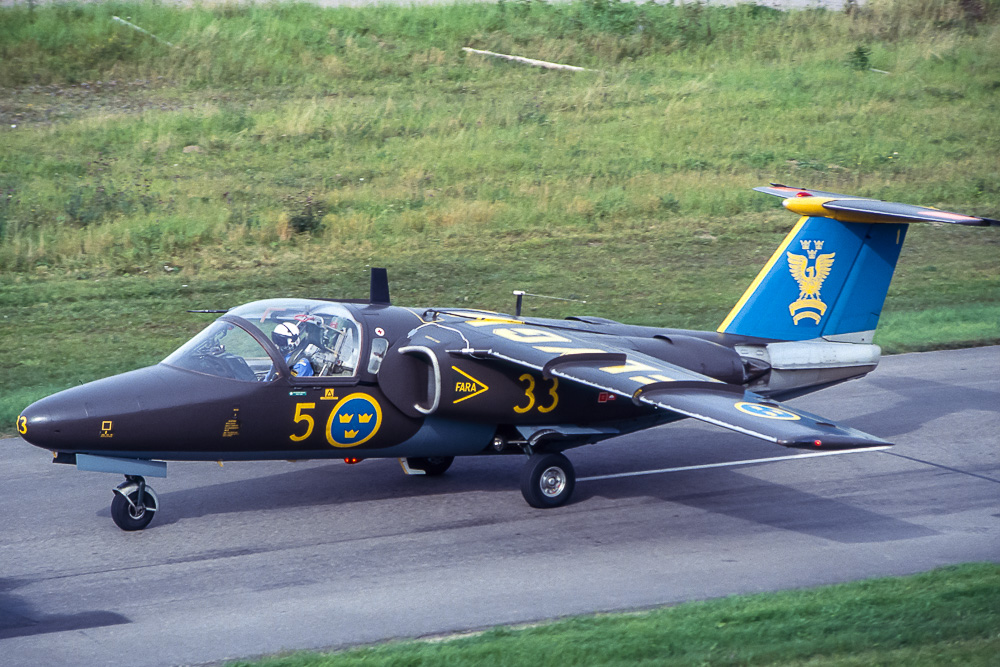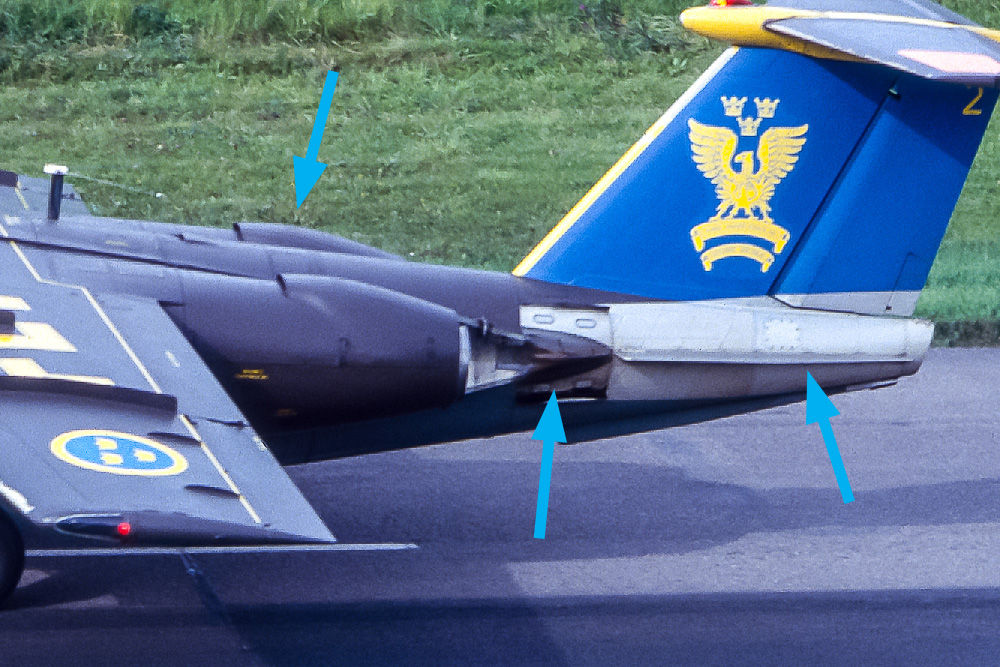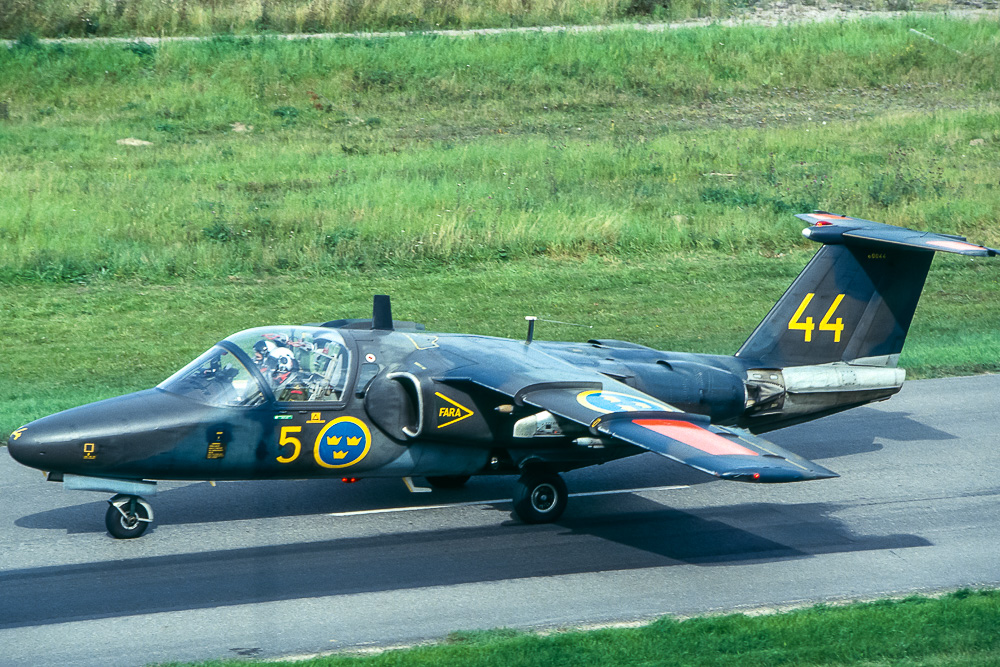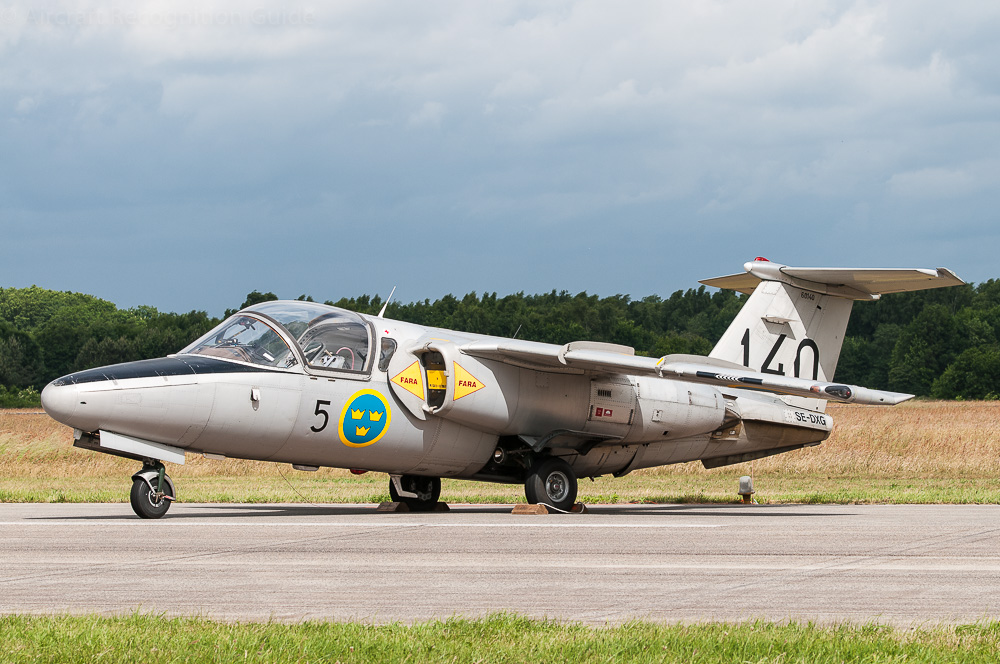
Saab 105
When the Swedish air force was looking for a replacement of the ageing deHavilland Vampires, Saab responded with a design inspired by the Folland Gnat, that happened to be a competitor. Apart from the wings and landing gear we see hardly any similarities though.
The Saab 105 - Swedish military designation Sk60 - has high mounted, swept wings with two wing fences. The fuselage is wide enough to allow side-by-side seating, under a canopy that open up and back. The two engines are in nacelles at the side of the fuselage, under the wings. At the back is a T-tail. This combination is quite unique.
Different versions
The different versions of the Saab 105 can be distinguished by:
- the shape of the nose
- the number and location of small air intakes near the exhausts
- the shape of the exhausts
- the presence of storage points under the wings
- the presence of ejection seats
Sk60A
The basic training version has two side-by-side ejection seats. The nose is blunt and is fully covered. The Sk60A has no provision for storing weapons or drop tanks under the wings. The engines have narrow intakes on top, in between the wings and the exhausts. The fairing of the nacelle to the rear fuselage is rather short and ends in a sort of strake at the side of the tail cone.
The Sk60A is the basic trainer of the Swedish air force. It has two side-by-side ejection seats and a closed, rounded nose.
Here you can see the details of the rear fuselage of the early versions of the Saab 105. Typical are the narrow intakes on top of the nacelles, the short nacelle-fuselage fairings and strakes at the side of the tail cone.
Sk60B
Compared to the Sk60A the basic attack aircraft Sk60B has gun sights on top of the instrument panel and storage points under the wings. For the rest the Sk60B is the same as the Sk60A.
The presence of hard points under the wings of this Sk60B is evident, but the gun sights are also visible on top of the instrument panel.
Sk60C
This is a two-seat ground attack/reconnaissance version for the Swedish air force. For this purpose it has an extended camera nose.
The nose of the Sk60C is longer and more pointed than other versions of the Saab 105.
Sk60D & Sk60E
Unlike the Sk60A, B and C the Sk60D and Sk60E can seat four persons. They do not sit in ejection seats, but more normal seats. The seats in the back are not clearly visible, but you can observe the difference in front seats. Note that two front seats can be quickly replaced by ejection seats, making is difficult to disguish the Sk60D/E from the Sk60A. The Sk60E has just different instruments than the Sk60D.
The back seats are not visible in this Sk60E, but you can clearly see that there are no ejection seats up front.
Saab 105G, 105Ö & 105XT
The only other user of the Saab 105 was the Austrian air force. It is designated Saab 105Ö, from Österreich. It is a customised version of the Saab 105XT, which is in itself a development of the Sk60B, so with the ability to store weapons under the wings. The Saab 105G is basically a Saab 105XT with updated avionics.
The main difference of all compared to earlier versions is in the nacelles and exhausts. The Saab 105G, Ö and XT have different engines and do not have additional narrow intakes on top, but a single one on top of the fuselage in between the nacelles. Also the nacelle-fuselage fairing are longer. They do not end in strakes and the side of the tail cone. The nose has a transparent part at the underside, close to the front.
Sk60W
In the 1990s the remaining Sk60A, Sk60B and Sk60C models were upgrades with WIlliams FJ44 engines. This upgrade was unofficially named Sk60W, but in the end the existing Swedish designations were not changed.
Confusion possible with
Grumman A-6 Intruder
While having a side-by-side cockpit like the Saab 105, the Intruder has no T-tail, wings through the fuselage and long, air narrow intakes below the canopy.
Cessna T-37
Also a jet trainer in which student and instructor sit side-by, but no T-tail, and engines in the roots of the low wings.
Aero L-29 Delfin

The L-29 has a T-tail like the Saab 105 and is a jet trainer, but there similarities end. The Delfin has one engine in the rear fuselage, a tandem cockpit, mid to low mounted wings. So no room for serious confusion.









